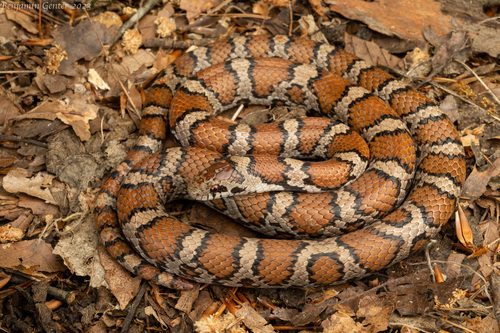
Milk Snake
The milk snake, with its striking red, black, and white bands, is a master of mimicry, resembling the venomous coral snake. Found in diverse habitats across the Americas, this non-venomous snake plays a vital role in controlling rodent populations, enriching its ecosystem through stealth and adaptability.
15-20 years
Lifespan
Length: 61 - 132 cm
Size
Yellow, Red, Black
Color
Least Concern
Conservation Status
Stable
Population Trend
Distribution Range of the Milk Snake
Lampropeltis triangulum, commonly known as the milk snake, is native to the Americas. Its geographical distribution spans across North America and Central America, specifically in parts of Canada, the United States, Mexico, and Central America. In the U.S., it is found from the eastern states to the Midwest and extending south into parts of Texas and the Southeast.
Milk Snake's Habitat
Environmental Conditions
Milk snakes are highly adaptable and inhabit a range of environmental conditions. They are typically found in forests, fields, agricultural areas, and rocky outcrops. They prefer habitats with ample cover and are often found in or near old barns or other outbuildings where they can find prey and shelter.
Ecological Niche
Lampropeltis triangulum occupies an ecological niche as a predator of small mammals, birds, and amphibians. They are non-venomous constrictors, hunting primarily at night. Their presence helps control the populations of their prey, making them important for ecological balance. Variations in habitat preferences can occur due to regional adaptations and subspecies diversity, such as those found in tropical versus temperate regions.
Copyright @ Nature Style Limited. All Rights Reserved.
 English
English